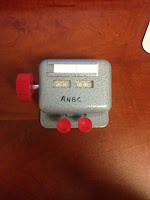For those of you who got the reference of my title, I have great respect and for those of you who didn't, I still have great respect, but also a lesson. If you would like to understand my reference, just google New Girl puzzling to experience the funniest 20 minutes of your life.
Now back to the main event.
We have all the puzzle pieces. By this I mean the data and analysis that we collected and completed.
Just to refresh everyone's memory:
What is this data really indicating?
First off, each cell line, except for DU145 (is that an almond?), has a different gene expression profile between the cell treated with SD and those treated with FD. For 22Rv1, the genes that were differentially expressed between the two cell lines were PARP1, CDKN1A, DDB2, and TRIB2. While for PC3, the genes that were differentially expressed were DEDD, RPA1, and MDM.
Additionally, the cell lines also exhibit different radioresistance status. For 22Rv1, the SD-treated cells were radiosensitive and the FD-treated cells were radioresistant. While for PC3, the SD-treated cells were radioresistant and the FD-treated cells were radiosensitive.
This indicates that for each cell line radiation treatments induce different biological responses.
Furthermore, this indicates the heterogeneity of the prostate tumor and the complexity of radiation treatment.
Whoa, big words.. must be something important!
You are correct! It is.
These results show us the diversity of the prostate tumor. All the cell lines used in this study were from the prostate tumor and a tumor can consist of one, two, or all of these cell lines. Based on the results, this means that parts of a tumor may respond better to certain types of radiation treatments, while other parts will respond better to another type. This could lead to more personalized approach when treating patients with radiation therapy.
One thing to keep in mind. There was a major limit on this study. The gene panel used was previously designed for leukocytes and bio-dosimetry. This means these genes were found to be responsive to radiation in white blood cells and respond to different total doses of radiation. This study was for prostate cancer cell lines and utilized the same total dose of 10Gy.
Even though, the results of this study still indicate that there is a difference in biological response of the cell between the single dose and fractionated dose treatments. The lab will continue this reach by beginning large scale proteomic and genomic screenings.
















